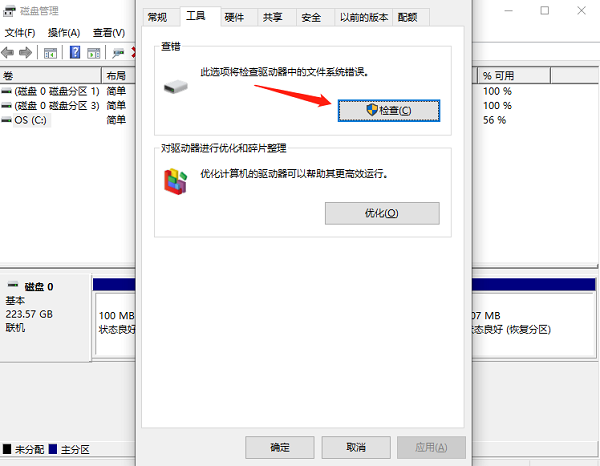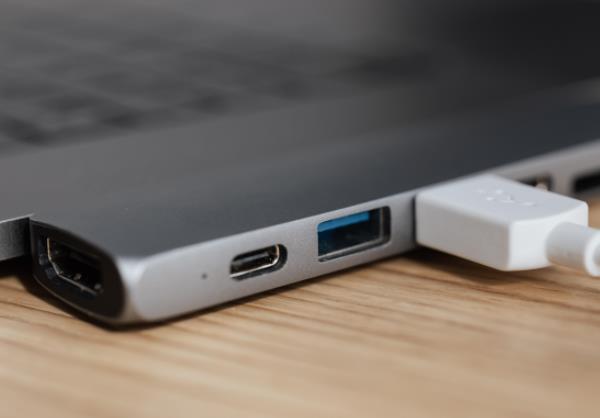U盤作為一種便攜、容量大、讀寫方便的存儲設備,廣泛應用于學習、工作與生活中。但很多人在使用過程中遇到過這樣的問題:U盤突然無法讀取,系統提示“請插入磁盤”、“需要格式化磁盤才能使用”或干脆完全無反應。這種情況下,里面的重要數據是否還能恢復?本文將為你詳細解析U盤損壞的原因及常見的數據恢復方法。

一、U盤無法讀取的常見原因
1. 邏輯損壞:這類問題包括文件系統錯誤、分區表損壞、病毒感染、誤刪除或誤格式化等。通常U盤還能被系統識別,只是無法正常打開或讀取文件。
2. 物理損壞:例如U盤主控芯片、閃存芯片損壞,USB接口松動、電路板燒毀等。這類問題可能導致U盤完全無法識別,甚至連驅動都無法安裝。
3. 人為操作不當:比如在寫入數據過程中強制拔出U盤,或在多次插拔中損傷接口,也可能引發無法讀取的問題。

二、數據恢復前的準備工作
在嘗試數據恢復之前,建議不要對U盤進行任何寫入操作,也不要格式化。過多的操作可能會覆蓋原有數據,從而影響恢復效果。
三、常見的數據恢復方法
 Windows系統自帶工具修復" alt="使用Windows系統自帶工具修復" border="0" vspace="0" style="--tw-border-spacing-x: 0; --tw-border-spacing-y: 0; --tw-translate-x: 0; --tw-translate-y: 0; --tw-rotate: 0; --tw-skew-x: 0; --tw-skew-y: 0; --tw-scale-x: 1; --tw-scale-y: 1; --tw-pan-x: ; --tw-pan-y: ; --tw-pinch-zoom: ; --tw-scroll-snap-strictness: proximity; --tw-gradient-from-position: ; --tw-gradient-via-position: ; --tw-gradient-to-position: ; --tw-ordinal: ; --tw-slashed-zero: ; --tw-numeric-figure: ; --tw-numeric-spacing: ; --tw-numeric-fraction: ; --tw-ring-inset: ; --tw-ring-offset-width: 0px; --tw-ring-offset-color: #fff; --tw-ring-color: rgb(59 130 246 / 0.5); --tw-ring-offset-shadow: 0 0 #0000; --tw-ring-shadow: 0 0 #0000; --tw-shadow: 0 0 #0000; --tw-shadow-colored: 0 0 #0000; --tw-blur: ; --tw-brightness: ; --tw-contrast: ; --tw-grayscale: ; --tw-hue-rotate: ; --tw-invert: ; --tw-saturate: ; --tw-sepia: ; --tw-drop-shadow: ; --tw-backdrop-blur: ; --tw-backdrop-brightness: ; --tw-backdrop-contrast: ; --tw-backdrop-grayscale: ; --tw-backdrop-hue-rotate: ; --tw-backdrop-invert: ; --tw-backdrop-opacity: ; --tw-backdrop-saturate: ; --tw-backdrop-sepia: ; --tw-contain-size: ; --tw-contain-layout: ; --tw-contain-paint: ; --tw-contain-style: ; box-sizing: border-box; border-width: 0px; border-style: solid; border-color: rgb(229, 231, 235); display: inline-block; vertical-align: middle; max-width: 100%; height: 466px; width: 600px; cursor: zoom-in;" onload="return imgzoom(this,600);" onclick="javascript:window.open(this.src);" style="cursor:pointer;"/> Windows系統自帶工具修復" alt="使用Windows系統自帶工具修復" border="0" vspace="0" style="--tw-border-spacing-x: 0; --tw-border-spacing-y: 0; --tw-translate-x: 0; --tw-translate-y: 0; --tw-rotate: 0; --tw-skew-x: 0; --tw-skew-y: 0; --tw-scale-x: 1; --tw-scale-y: 1; --tw-pan-x: ; --tw-pan-y: ; --tw-pinch-zoom: ; --tw-scroll-snap-strictness: proximity; --tw-gradient-from-position: ; --tw-gradient-via-position: ; --tw-gradient-to-position: ; --tw-ordinal: ; --tw-slashed-zero: ; --tw-numeric-figure: ; --tw-numeric-spacing: ; --tw-numeric-fraction: ; --tw-ring-inset: ; --tw-ring-offset-width: 0px; --tw-ring-offset-color: #fff; --tw-ring-color: rgb(59 130 246 / 0.5); --tw-ring-offset-shadow: 0 0 #0000; --tw-ring-shadow: 0 0 #0000; --tw-shadow: 0 0 #0000; --tw-shadow-colored: 0 0 #0000; --tw-blur: ; --tw-brightness: ; --tw-contrast: ; --tw-grayscale: ; --tw-hue-rotate: ; --tw-invert: ; --tw-saturate: ; --tw-sepia: ; --tw-drop-shadow: ; --tw-backdrop-blur: ; --tw-backdrop-brightness: ; --tw-backdrop-contrast: ; --tw-backdrop-grayscale: ; --tw-backdrop-hue-rotate: ; --tw-backdrop-invert: ; --tw-backdrop-opacity: ; --tw-backdrop-saturate: ; --tw-backdrop-sepia: ; --tw-contain-size: ; --tw-contain-layout: ; --tw-contain-paint: ; --tw-contain-style: ; box-sizing: border-box; border-width: 0px; border-style: solid; border-color: rgb(229, 231, 235); display: inline-block; vertical-align: middle; max-width: 100%; height: 466px; width: 600px; cursor: zoom-in;" onload="return imgzoom(this,600);" onclick="javascript:window.open(this.src);" style="cursor:pointer;"/>
2. 借助數據恢復軟件
3. 更換USB接口或嘗試在其他電腦上讀取
有時候問題并不在U盤本身,而是電腦USB接口損壞或驅動異常。嘗試換一臺電腦或使用USB擴展器再次插入U盤,有時能起死回生。
4. 尋求專業數據恢復服務
如果上述方法都無效,或者U盤涉及重要工作資料、個人回憶等關鍵數據,建議不要自行嘗試拆解或修復,而是將U盤送至專業的數據恢復機構。雖然費用相對較高,但成功率也更有保障。

四、如何預防U盤數據丟失
1. 定期備份重要數據;
2. 避免在U盤讀寫時強行拔出;
3. 避免U盤接觸高溫、潮濕和強電磁場環境;
4. 安裝防病毒軟件,防止惡意程序破壞U盤數據。
以上就是u盤損壞無法讀取后恢復數據的方法,希望對你有幫助。
| 
